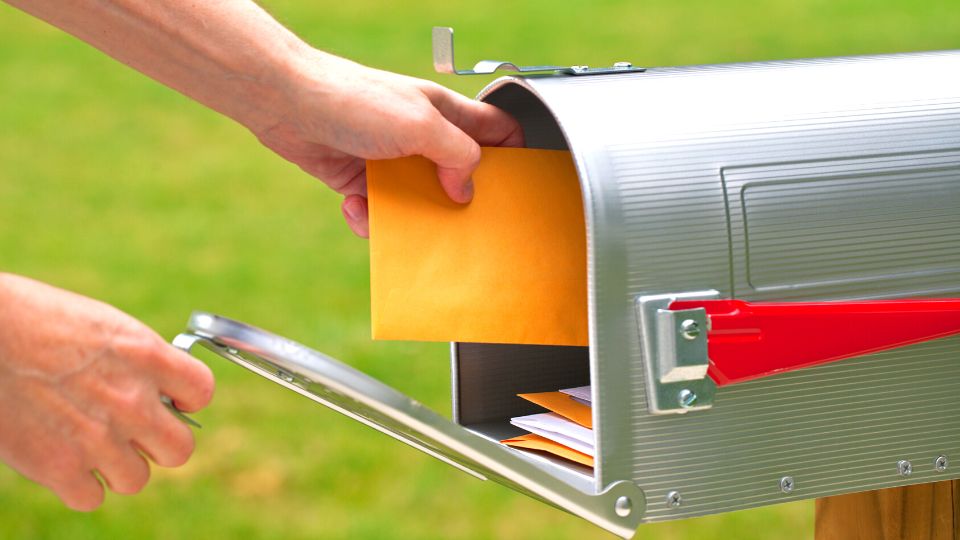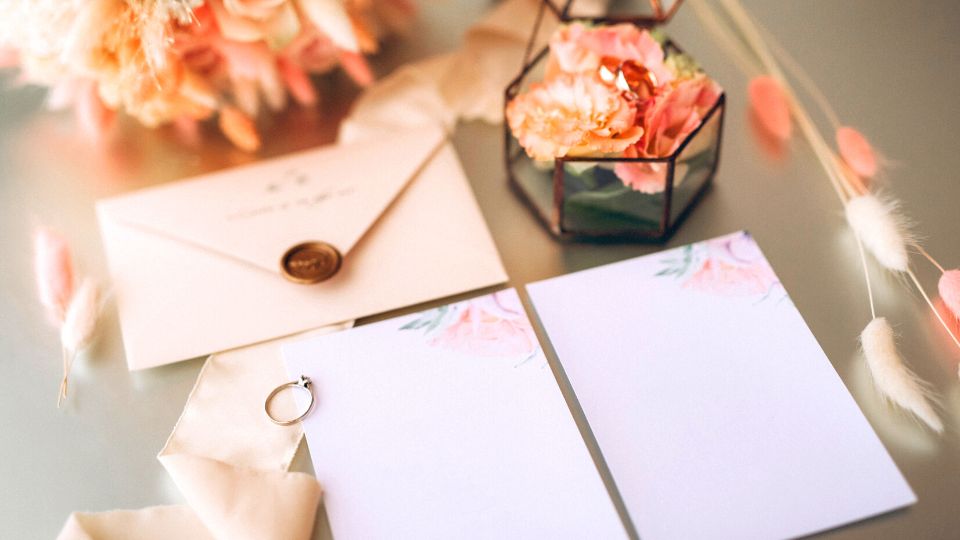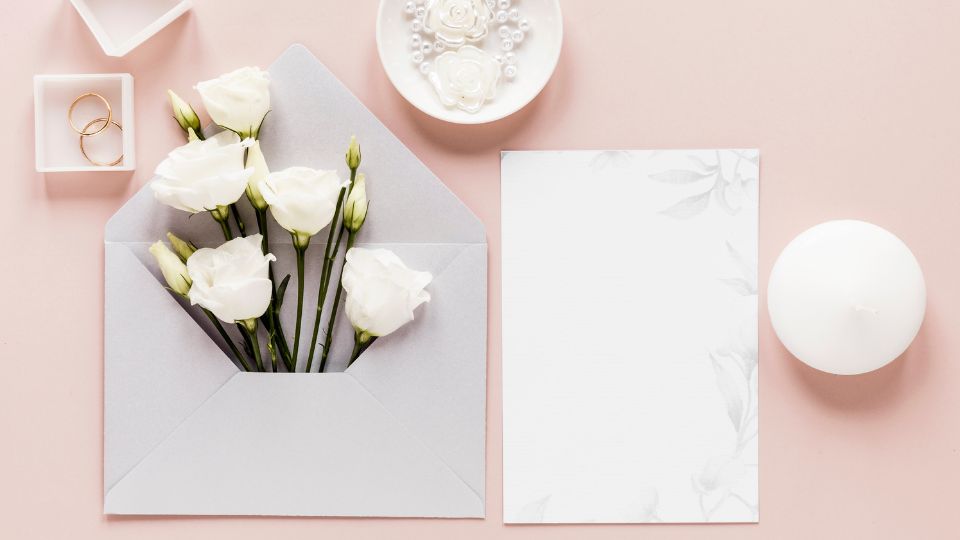Sending out wedding invitations is an exciting milestone for any couple, but it can also be a bit overwhelming. From selecting the right postage to addressing envelopes and tracking RSVPs, there are many details to consider.
In this article, we’ll share some tips and tricks for mailing wedding invites that will help ensure a smooth and stress-free process. Whether you’re planning a local or international wedding, we’ve got you covered.
Selecting the Right Postage
Having the correct postage on your wedding invitations is important for several reasons. First and foremost, you want to ensure that your invitations reach their intended recipients. Additionally, using incorrect postage may result in your invitations being returned to you or delayed in the mail, causing stress and frustration.
Factors to Consider When Selecting Postage
When selecting postage for your wedding invitations, there are several factors to consider. First, consider the weight of your invitation suite. This includes the invitation, response card, and any additional enclosures. Additionally, the thickness of your invitations may also impact the required postage.
Another factor to consider is the size of your invitation. Oversized or irregularly shaped invitations may require additional postage, even if they weigh less than the standard letter weight.
Tips for Weighing and Measuring Invitations
To ensure you select the correct postage for your wedding invitations, you have to accurately weigh and measure your invitation suite. Use a postage scale to weigh your invitations, response cards, and any additional enclosures. Be sure to include the weight of the envelope as well.
Measure the dimensions of your invitation suite, including the length, width, and thickness. If you are unsure whether your invitations require additional postage, take them to your local post office to have them weighed and measured.
Preparing Invitations for Mailing
Sending out wedding invitations can be a daunting task, but with proper preparation, it can be a stress-free process. Here are some tips for assembling, addressing, and sealing envelopes to ensure your wedding invitations arrive safely and in style.
Assembling Invitations
Before you begin addressing your invitations, make sure that you have all the pieces of your invitation suite together. This includes the invitation, RSVP card, any additional enclosures, and envelopes. Make sure that all of the pieces are in the correct order and facing the right direction. It is also helpful to have a sample invitation assembled so you can refer to it as you work.
Addressing Invitations
When addressing wedding invitations, you must follow proper etiquette. Handwriting addresses can add a personal touch, but printing them can save time and create a more polished look. Whichever method you choose, make sure that the addresses are legible and accurate.
For formal invitations, it is customary to use titles and full names. For example, “Mr. and Mrs. John Smith” instead of “John and Mary Smith.” For less formal invitations, you can use first names or nicknames. Remember to double-check that the names and addresses match. You don’t want to send an invitation to the wrong person!
Sealing Envelopes
Once your invitations are addressed, it’s time to seal the envelopes. It is recommended to use a glue stick or wet sponge to seal the envelopes. Avoid using tape, as it can damage the envelope or make it difficult to open.
Before sealing the envelopes, make sure that all of the enclosures are inside and facing the right direction. If you are using multiple envelopes, make sure they are addressed and sealed correctly. It is also a good idea to weigh a sample envelope to ensure you have the correct postage.
Postage
Choosing the right postage is important to ensure that your invitations arrive at their destination on time. Make sure to weigh your invitation suite before purchasing stamps. You don’t want to overpay for postage or risk your invitations being returned due to insufficient postage.
You may also want to consider using custom stamps to add a personal touch to your invitations. Many online retailers offer customizable stamps with photos or monograms.
Timing
Timing is a critical factor when it comes to mailing wedding invitations. Couples should aim to send out their wedding invitations six to eight weeks before the wedding date to give guests enough time to plan their attendance. For destination weddings or out-of-town guests, sending invitations ten to twelve weeks before the wedding is recommended to allow for travel arrangements.
Sending invitations to out-of-town guests requires special attention. It’s a good idea to include a list of nearby accommodations and transportation options to make their planning easier. Also, providing an RSVP date well in advance will allow for out-of-town guests to finalize their travel plans and RSVP accordingly.
Late additions to the guest list can be a challenging situation for couples. In this case, it’s best to handle them as quickly as possible. Couples can opt to send out separate invitations for these guests, or if time is limited, send out a change of plans card notifying them of the update. Whatever the decision, it’s essential to keep the original guests informed of any changes and to ensure that everyone feels included and valued.
Dealing with RSVPs
Dealing with RSVPs can bring a headache in the wedding invitation process. It can be stressful and time-consuming, but with proper planning and organization, it can be managed smoothly.
Here are some tips on how to deal with RSVPs:
Preparing for RSVPs
Include a response card with a pre-stamped envelope in your wedding invitation. This will make it easier for guests to respond and ensure that their response is returned in a timely manner. Also, consider including an option for guests to RSVP online, as this can be more convenient for some.
Tips for tracking RSVPs
Create a spreadsheet to keep track of RSVPs, including the names of the guests, whether they are attending or not, and any meal preferences. Set a deadline for guests to respond and follow up with those who have not responded a few days after the deadline.
It’s also a good idea to confirm the attendance of out-of-town guests to help with final headcount and accommodation planning.
Handling guests who do not RSVP
There will always be guests who forget to RSVP, so you should have a plan in place for handling these situations. Follow up with a phone call or email to politely remind them to RSVP. If you still don’t receive a response, assume they are not attending and adjust your headcount accordingly.
Tips for International Mailing
Wedding invitations are an important part of the planning process and you should make sure they are delivered to guests without any issues. When sending wedding invitations internationally, there are additional considerations to keep in mind to ensure timely and safe delivery.
Here are some tips for international mailing:
- Plan ahead: Mailing invitations internationally can take longer than domestic mail, so plan accordingly. Be sure to send your invitations with enough time for them to arrive at least six to eight weeks before the wedding.
- Know the regulations: Each country has different regulations for mailing items, including weight, size, and content. Be sure to research the regulations of the country you’re mailing to and ensure your invitations comply.
- Choose the right postage: International postage rates can vary, so be sure to choose the correct postage to avoid your invitations being returned or delayed. Some postal services offer international flat-rate options that can save you money.
- Use tracking and insurance: To ensure your invitations arrive at their destination safely, consider using a tracking service or adding insurance to your postage. This can provide peace of mind and help you track your invitations in case of any issues.
- Address invitations correctly: When addressing international invitations, follow the correct format and include all necessary information. Research the proper addressing format for the country you’re mailing to and include any necessary postal codes or region information.
- Consider electronic options: In some cases, it may be more convenient to send electronic invitations to international guests. This can save time and money on postage, while still allowing you to send a personal invitation to your guests.
Overall, international mailing requires some additional planning and attention to detail, but it can be a great way to include guests from all over the world in your special day. With these tips, you can ensure your invitations arrive safely and on time, no matter where your guests are located.
Conclusion
In conclusion, mailing wedding invitations is an important aspect of the wedding planning process, and it’s important to ensure that everything is done correctly to ensure the invitations are delivered on time and to the right guests.
By following these tips and tricks for mailing wedding invites, couples can feel confident that their invitations will be received with joy and excitement by their guests.





